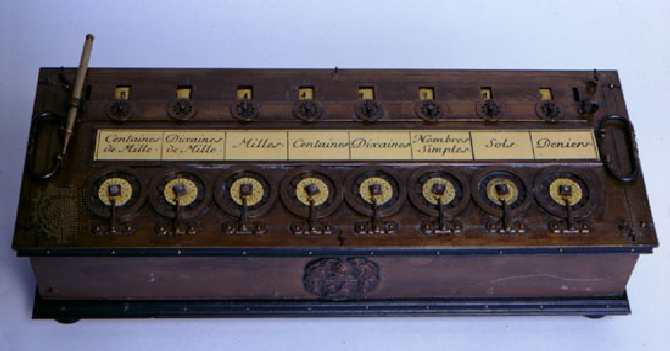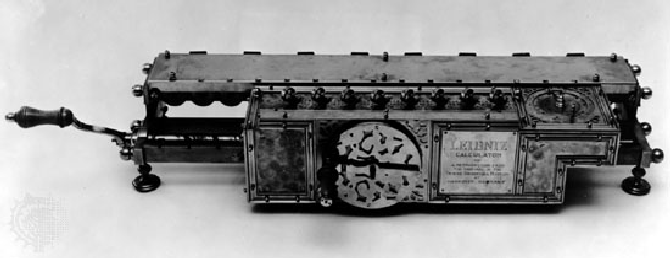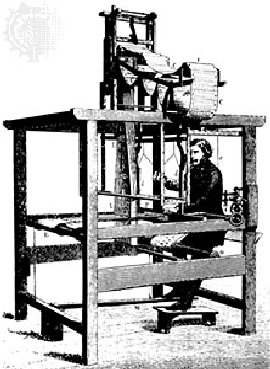
- •М.В. Жесткова, с.Я. Никитина
- •Самара 2007
- •Contents
- •Grammar review
- •To have
- •In the computer room
- •Grammar review
- •The internet
- •Computers in our life
- •Common computer applications
- •Computer applications on railways
- •Grammar review
- •What is a computer?
- •Types of computers
- •Микрокомпьютер
- •Мейнфрейм
- •Analog and digital computers
- •Grammar review
- •Hardware
- •(1) The Central Processing Unit
- •(2) Storage Devices
- •Internal Memory
- •(3) Input Devices
- •(4) Output Devices
- •The definition of mechanical brain
- •Grammar review
- •Software
- •(A) програмmное обеспечение компьютера
- •(B) популярные операционные системы windows
- •Macintosh
- •(1) Introduction
- •(2) Early Efforts
- •(3) Video Games
- •(4) Nintendo And Competitors
- •(5) Computer Games
- •(6) Advantages of Computer Games
- •(7) Popular Computer Games
- •Grammar review
- •Part I (Prehistory)
- •Part II (The Computer of the 19th Century)
- •As far as I know; In fact; It is hard to say; To my mind; In my opinion I believe; I suppose.
- •(1) Charles babbage
- •(2) Augusta ada king, countess of lovelace
- •Grammar review
- •Babbage's dream come true Part I (The Harvard Mark I)
- •Part II (colossus, eniac, edvac)
- •Computerland
- •Grammar review
- •Deep blue
- •The pc revolution Part I
- •Part III
- •People who changed the computer world Part I
- •Part II
- •Part III
- •Part IV
- •Наступление персональных компьютеров
- •Enjoy yourself
- •(2) Mother should have warned you!
- •(3) Bill gates in heaven
- •(4) 10 Programmers
- •(5) What if dr. Suess wrote a manual?
- •How modern are you?
- •Add up your score and read the analysis.
- •Add up your score and read the analysis.
- •Краткий грамматический справочник
- •§ 1. Личные и притяжательные местоимения Personal and Possessive Pronouns
- •§ 2. Глагол to be
- •§ 3. Глагол to have
- •§ 5. Притяжательный падеж имени существительного (Possessive Case)
- •§ 6. Существительное в функции определения (Noun as Attributive)
- •§ 7. Степени сравнения прилагательных и наречий (Comparison Degrees of Adjectives and Adverbs)
- •§ 8. Основные формы глагола
- •§ 9. Времена групп Indefinite, Continuous, Perfect в действительном (Active) и страдательном (Passive) залогах
- •Tenses in Active Voice
- •Tenses in Passive Voice
- •§ 10. Согласование времён (Sequence of Tenses)
- •§ 11. Модальные глаголы (Modal Verbs)
- •§ 12. Эквиваленты модальных глаголов (Equivalents of Modal Verbs)
- •§ 13. Причастие (The Participle)
- •Participle I
- •Participle II
- •§ 14. Герундий (The Gerund)
- •§ 15. Функции слов с окончанием -ing в предложении
- •§ 16. Функции слов с окончанием -ed в предложении
- •§ 17. Инфинитив (The Infinitive)
- •§ 18. Функции глагола to be
- •§ 19. Функции глагола to have
- •§ 20. Порядок слов в утвердительных предложениях
- •§ 21. Порядок слов в вопросительных предложениях
- •§ 22. Порядок слов в отрицательных предложениях
- •§ 23. Условные придаточные предложения (Conditional Sentences)
- •§ 24. Наиболее распространенные служебные слова
- •Библиографический список
Part I (Prehistory)
The ideas and inventions of many mathematicians, scientists and engineers paved the way for the development of the modern computer. The computer actually has three birth dates – one as a mechanical computing device (about 500 BC), another as a conception (1833) and the third as the modern electronic digital computer (1946).
T he
first mechanical calculator was the abacus.(See
Figure 1) It
was devised in Babylonia in about 500 BC. The abacus was the fastest
calculating device for many centuries. It is still being used in some
parts of the world because it can be understood without knowing how
to read. Now, as then, it consists of a rectangular frame with thin
parallel rods strung with beads1.
Abacus beads can be used to perform such simple arithmetical
operations as addition, subtraction, multiplication, and
division. Figure 1.
The
Abacus
he
first mechanical calculator was the abacus.(See
Figure 1) It
was devised in Babylonia in about 500 BC. The abacus was the fastest
calculating device for many centuries. It is still being used in some
parts of the world because it can be understood without knowing how
to read. Now, as then, it consists of a rectangular frame with thin
parallel rods strung with beads1.
Abacus beads can be used to perform such simple arithmetical
operations as addition, subtraction, multiplication, and
division. Figure 1.
The
Abacus
The abacus remained the only means of calculation up to the 17th century. After the invention of logarithms, W. Oughtred constructed the first slide-rule in 1630. The slide rule represented a quick and easy way of multiplication, division and raising to power2.
During the 17th and 18th centuries, calculators more sophisticated than the abacus and the slide rule began to appear. Although a number of people contributed to their development, Blaise Pascal (the French mathematician and philosopher) and Gottfried Leibniz (the German mathematician, philosopher and diplomat) usually are singled out3 as pioneers.
B .
Pascal designed the first adding machine in 1642. It was called the
Pascaline(See Figure 2) The
device could add and subtract six-figure numbers. Pascal invented the
machine for his father, a tax4
collector,
so it was the first business machine, too. He built 50 copies of his
machine over the next 10 years, but most served
as
curiosities5
in parlors of the wealthy.
.
Pascal designed the first adding machine in 1642. It was called the
Pascaline(See Figure 2) The
device could add and subtract six-figure numbers. Pascal invented the
machine for his father, a tax4
collector,
so it was the first business machine, too. He built 50 copies of his
machine over the next 10 years, but most served
as
curiosities5
in parlors of the wealthy.
Figure 2. The Pascaline
Numbers could be added by turning the wheels (located along the bottom of the machine) clockwise and subtracted by turning the wheels counterclockwise. Each digit in the answer was displayed in a separate window, visible at the top of the photograph.
Many scientists and inventors attempted to make improvements on Pascal's mechanical calculator. Gottfried Leibniz designed a special gearing system to enable multiplication on Pascal’s machine. In 1672, he also invented a calculating machine (called the Step Reckoner) capable of multiplying, dividing and extracting square roots. (See Figure 3)
F igure
3.The
Step Reckoner
igure
3.The
Step Reckoner
The original of Leibniz's Step Reckoner is now located in the Trinks Brunsviga Museum at Hannover, Germany. The turn of the crank (left) rotated several drums, each of which turned a gear connected to a digital counter.
The calculators of Pascal and Leibniz were unreliable, since the mechanical technology of the time was not capable of manufacturing the parts with required precision.
F ew
other mechanical devices built during the 19th
century were related to computing. There was one major exception: the
Jacquard
loom6,
invented in 1804 by a French weaver, Joseph-Marie Jacquard. (See
Figure 4) The
Jacquard loom was a marvel of the Industrial Revolution. It can be
called the first practical information-processing device. The
weaving of cloth on the Jacquard loom
was controlled by punch cards that enabled the loom
to weave any pattern automatically.
ew
other mechanical devices built during the 19th
century were related to computing. There was one major exception: the
Jacquard
loom6,
invented in 1804 by a French weaver, Joseph-Marie Jacquard. (See
Figure 4) The
Jacquard loom was a marvel of the Industrial Revolution. It can be
called the first practical information-processing device. The
weaving of cloth on the Jacquard loom
was controlled by punch cards that enabled the loom
to weave any pattern automatically.
Figure 4. The Jacquard Loom.
At the top of the machine, you can see a stack of punched cards. They were fed into the loom to control the weaving pattern.
The Jacquard loom provided important lessons: (1) the sequence of operations that a machine performs could be controlled; (2) a punched card could be used as a means for controlling the machine; and, (3) the most important, a device could be directed to perform different tasks by entering instructions into it – i.e. making the machine programmable.
It can be said that, in the Jacquard loom, programming was invented before the computer. The close relationship between the device and the program became apparent nearly 20 years later, with Charles Babbage's invention of the first computer (to be described in the next part).
Notes:1abacusbead– костяшка(элемент конторских счет);
2to raise to power – возводить в степень;
3to single out – выделять;
4tax – налог;
5to serve as a curiosity – служить диковинным украшением;
6Jacquard loom – жаккардовый ткацкий станок (для выработки крупноузорчатых тканей).
